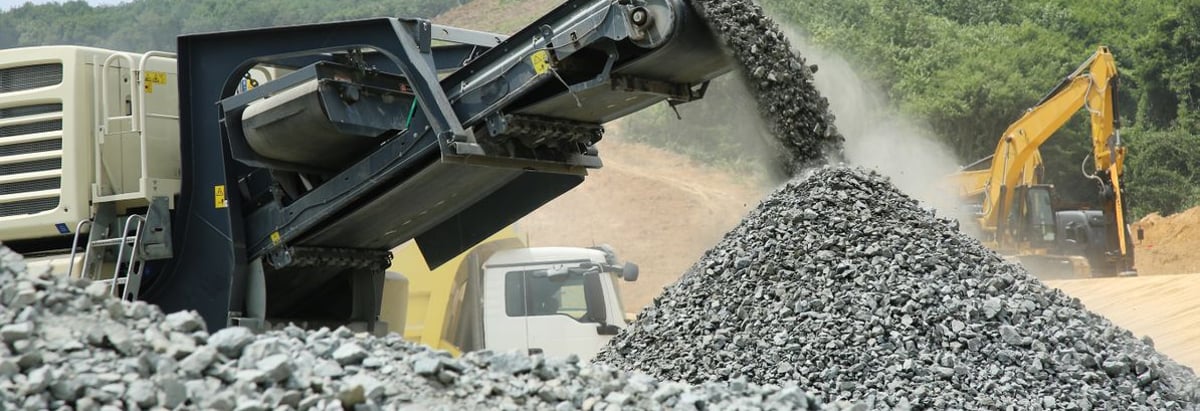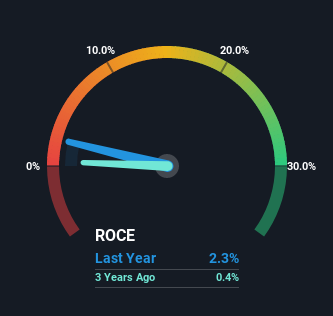- Saudi Arabia
- /
- Basic Materials
- /
- SASE:3020
The Returns On Capital At Yamama Saudi Cement (TADAWUL:3020) Don't Inspire Confidence

To find a multi-bagger stock, what are the underlying trends we should look for in a business? Firstly, we'll want to see a proven return on capital employed (ROCE) that is increasing, and secondly, an expanding base of capital employed. This shows us that it's a compounding machine, able to continually reinvest its earnings back into the business and generate higher returns. However, after briefly looking over the numbers, we don't think Yamama Saudi Cement (TADAWUL:3020) has the makings of a multi-bagger going forward, but let's have a look at why that may be.
Return On Capital Employed (ROCE): What is it?
For those who don't know, ROCE is a measure of a company's yearly pre-tax profit (its return), relative to the capital employed in the business. Analysts use this formula to calculate it for Yamama Saudi Cement:
Return on Capital Employed = Earnings Before Interest and Tax (EBIT) ÷ (Total Assets - Current Liabilities)
0.023 = ر.س130m ÷ (ر.س6.5b - ر.س896m) (Based on the trailing twelve months to March 2022).
Therefore, Yamama Saudi Cement has an ROCE of 2.3%. In absolute terms, that's a low return and it also under-performs the Basic Materials industry average of 6.5%.
Check out our latest analysis for Yamama Saudi Cement

In the above chart we have measured Yamama Saudi Cement's prior ROCE against its prior performance, but the future is arguably more important. If you'd like, you can check out the forecasts from the analysts covering Yamama Saudi Cement here for free.
What Does the ROCE Trend For Yamama Saudi Cement Tell Us?
On the surface, the trend of ROCE at Yamama Saudi Cement doesn't inspire confidence. To be more specific, ROCE has fallen from 8.2% over the last five years. On the other hand, the company has been employing more capital without a corresponding improvement in sales in the last year, which could suggest these investments are longer term plays. It may take some time before the company starts to see any change in earnings from these investments.
What We Can Learn From Yamama Saudi Cement's ROCE
To conclude, we've found that Yamama Saudi Cement is reinvesting in the business, but returns have been falling. Since the stock has gained an impressive 47% over the last five years, investors must think there's better things to come. Ultimately, if the underlying trends persist, we wouldn't hold our breath on it being a multi-bagger going forward.
If you want to continue researching Yamama Saudi Cement, you might be interested to know about the 2 warning signs that our analysis has discovered.
If you want to search for solid companies with great earnings, check out this free list of companies with good balance sheets and impressive returns on equity.
New: Manage All Your Stock Portfolios in One Place
We've created the ultimate portfolio companion for stock investors, and it's free.
• Connect an unlimited number of Portfolios and see your total in one currency
• Be alerted to new Warning Signs or Risks via email or mobile
• Track the Fair Value of your stocks
Have feedback on this article? Concerned about the content? Get in touch with us directly. Alternatively, email editorial-team (at) simplywallst.com.
This article by Simply Wall St is general in nature. We provide commentary based on historical data and analyst forecasts only using an unbiased methodology and our articles are not intended to be financial advice. It does not constitute a recommendation to buy or sell any stock, and does not take account of your objectives, or your financial situation. We aim to bring you long-term focused analysis driven by fundamental data. Note that our analysis may not factor in the latest price-sensitive company announcements or qualitative material. Simply Wall St has no position in any stocks mentioned.
About SASE:3020
YAMAMA Cement
Engages in the manufacture, production, and trading of cement in Saudi Arabia.
Undervalued with solid track record.
Similar Companies
Market Insights
Community Narratives



